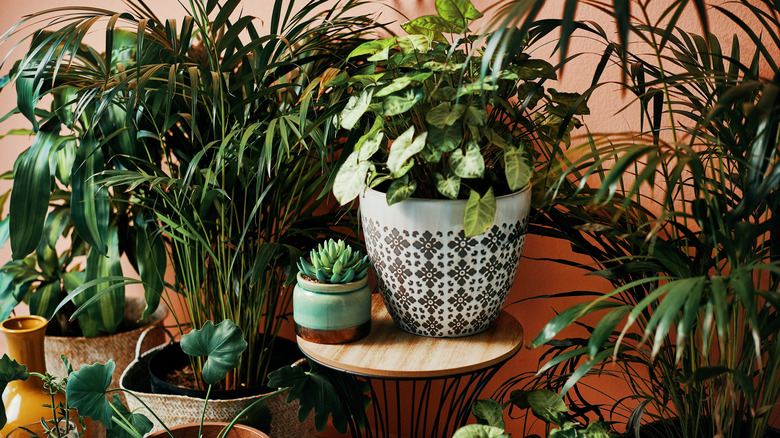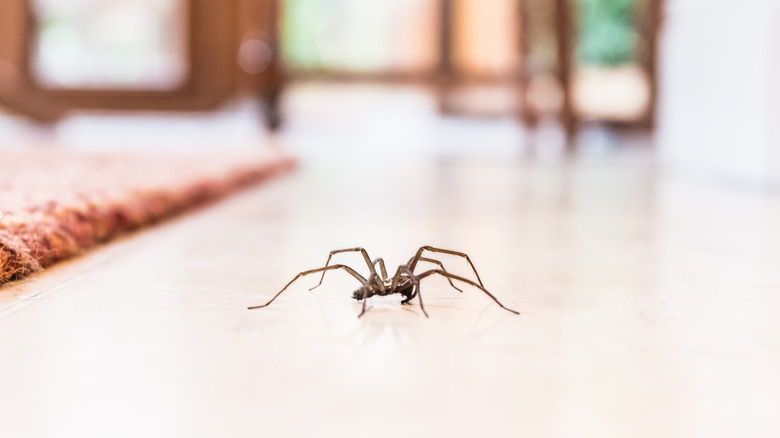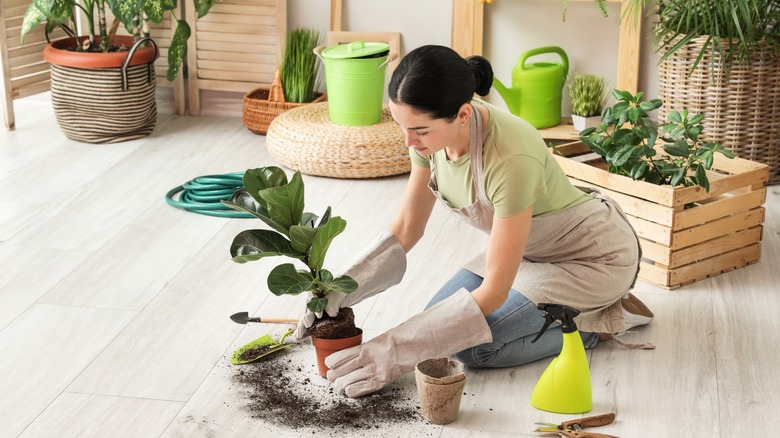Your Houseplants Could Be Attracting This Unwanted Pest (And Here's Why)
If you're dealing with a surprising number of spiders in your home and you're a fan of houseplants, it's time to connect the dots. Your beloved greenery could be an unintentional host to these eight-legged guests. It's not that spiders have an appetite for your plants, but rather, they find your indoor garden a perfect sanctuary. The ideal environment for spiders is one that mimics their natural habitat. Spiders thrive in dark, conspicuous places where they can hide from predators and ambush prey. Your home, and particularly the spaces around houseplants, can inadvertently replicate these conditions. They provide ample hiding spots and ideal conditions for spiders to weave their webs and raise their young.
Think of your houseplants as mini-ecosystems. They offer everything a spider could wish for: shelter, moisture, and a steady stream of food in the form of other insects. Plus, the less you disturb these plants, the more inviting they become for spiders to settle in. It's a classic case of creating an unintended haven for these critters. This cozy setup for spiders is often more pronounced if you're not regularly maintaining your plants. Overgrown foliage, dead leaves, and undisturbed corners are like luxury apartments for spiders. So, what do you do? First, acknowledge this natural tendency of spiders. Then, adopt a proactive approach to keeping spiders out and caring for your houseplants.
Understanding the spider's food source
The link between your houseplants and a spider invasion lies in the food chain. Houseplants are ecosystems in their own right, teeming with life that goes beyond just the plant itself. They can attract a variety of insects, including aphids, gnats, and other small bugs. These insects are drawn to your plants for various reasons — some feed on the plant sap, while others may be attracted to the moisture. Here's the crucial part: spiders feed on all sorts of insects, including aphids. Spiders do not come for the plants themselves but for the ants and other insects that your plants have attracted. Your houseplants essentially become a buffet where spiders find a plentiful supply of food.
What's also interesting is that the presence of aphids can escalate quickly, turning your plant into a hotspot for ant activity. Ants are attracted to the honeydew secretion produced by aphids. And where there are ants, spiders aren't far behind. Furthermore, other common houseplant pests, like gnats and small flies, also contribute to this ecosystem. These insects thrive in the moist soil of overwatered plants or on decaying plant matter. As with aphids and ants, these pests serve as another food source for spiders. In understanding this, you can see how an indoor plant can inadvertently become a hub for a mini-food chain.
Keeping spiders away from houseplants
Your houseplants, while they enhance your home's ambiance, shouldn't become a haven for these eight-legged visitors. There are a number of things you can do to keep spiders at bay without compromising the health and beauty of your plants by using chemical repellents. One important aspect is the cleanliness of the area surrounding your plants. As mentioned earlier, spiders often hide in cluttered spaces, so keep the area around your houseplants clean and tidy. This means regularly dusting the leaves, cleaning the pots, and ensuring the immediate vicinity is free from clutter.
Also, pay attention to your houseplant watering practices. Overwatering can attract more insects, like fungus gnats. This, in turn, can attract spiders. Keep a balanced watering schedule by allowing plants to dry out first before re-watering. If the infestation is too heavy, it might be best to remove the plant altogether. Next, consider the types of houseplants you have. Certain plants like lavender, mint, and basil emit scents that are unpleasant to spiders. Incorporating these plants into your indoor garden may help deter spiders naturally. Finally, add a little disruption to their preferred settings. Remember, spiders love stability; they're all about finding a quiet corner where they can settle down undisturbed. Shake things up a bit by rearranging your plants once in a while to remove any webs surrounding the plant. These steps, when combined, form a multi-faceted approach to keeping your indoor plants spider-free.


